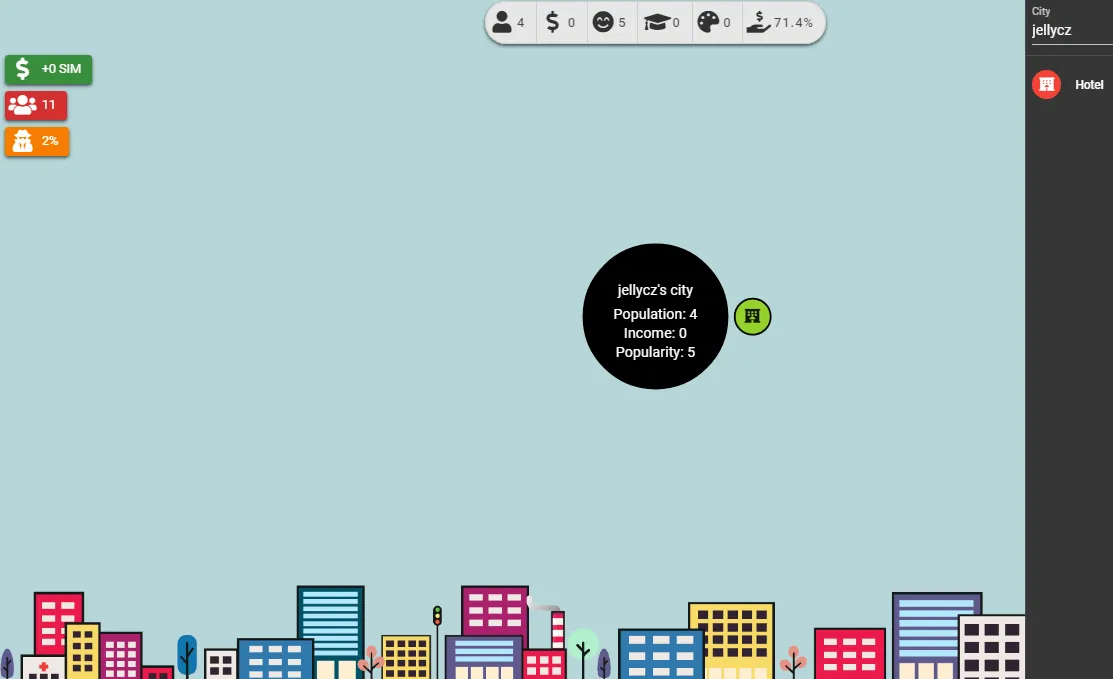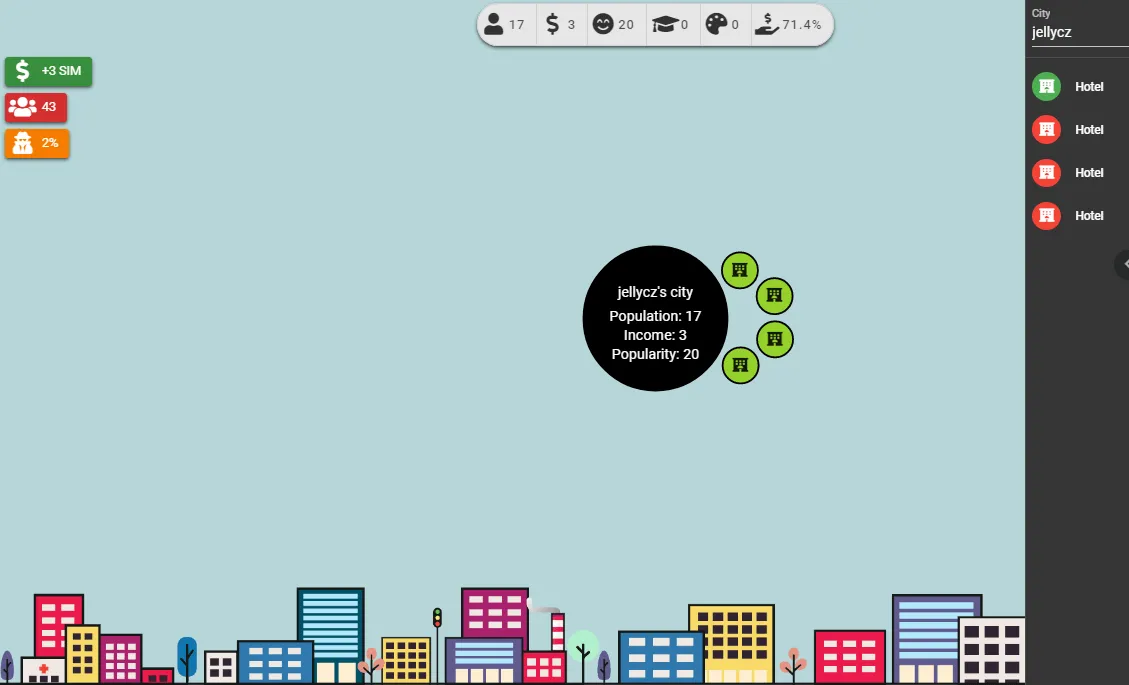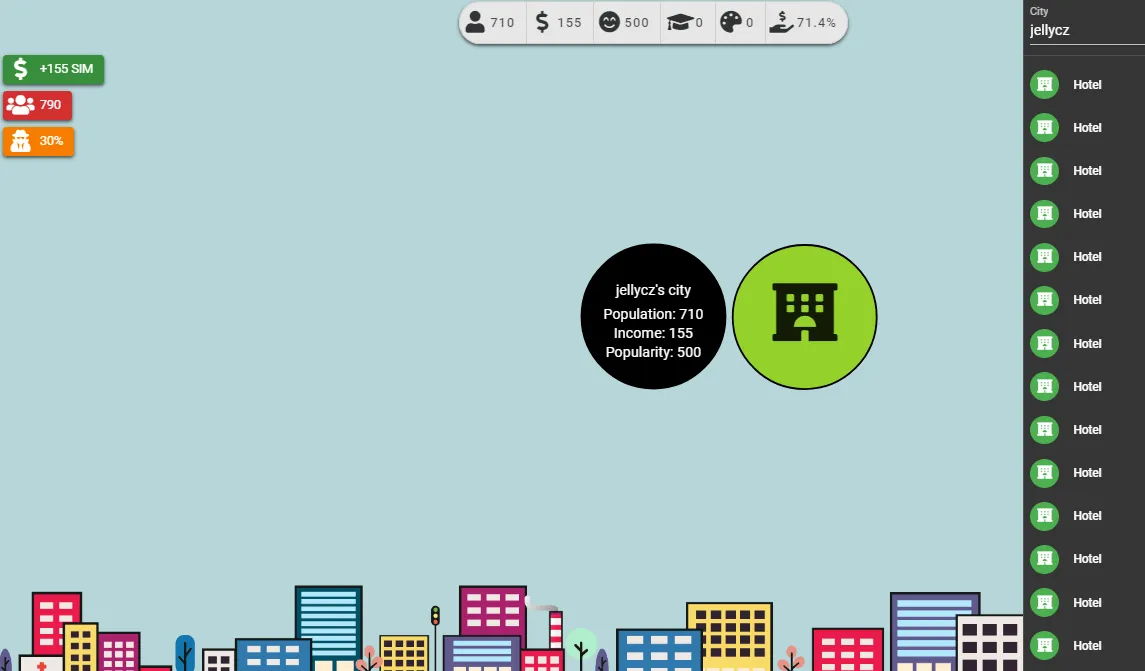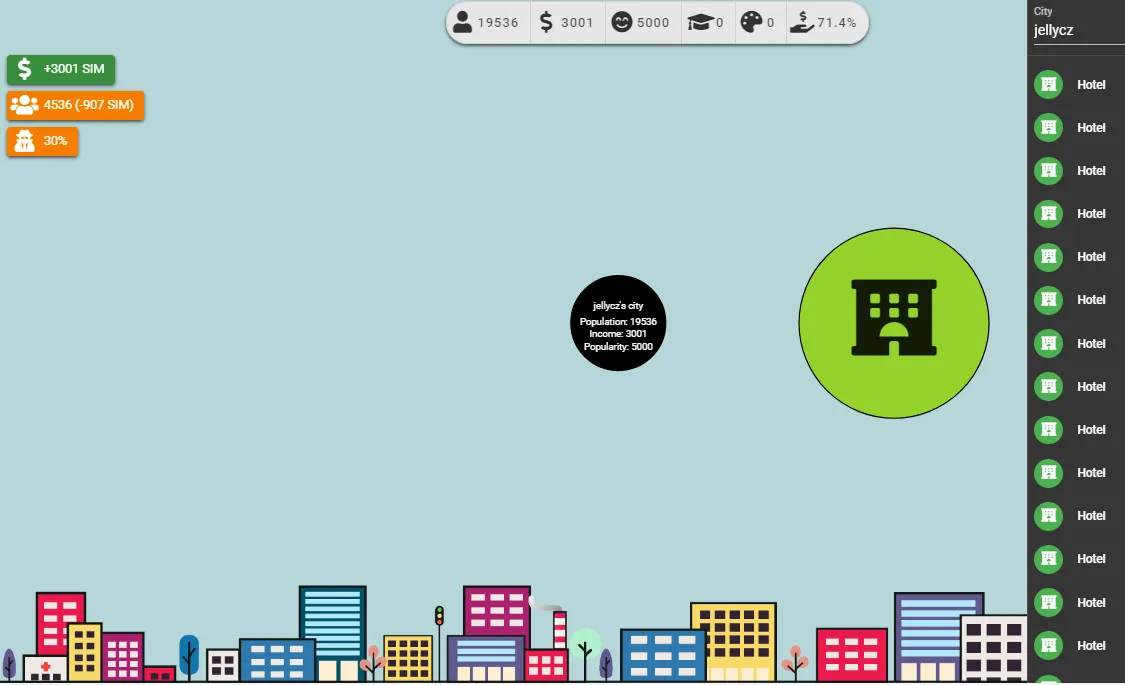dCity is a town simulation game that borders on DeFi running a reward pools worth over 100k in current USD value (@dcityrewards).
There are posts labeled as tutorials and others are going to follow now that the 3rd Edition of dCity NFTs releases at the end of April. However. they usually offer rewording of the rules with little attempt at tutoring. I would like to offer a post (actually a series) that attempts to demonstrate the game mechanics for new players. Anyone interested in the 3rd Edition upgrades can skip it and refer to the manual instead.
In my eariier post, I offered a few microbuilds for trying out dCity on a budget. If Parks and Art Galleries are not your thing, you might prefer to join me going to the beach today.
Let us find a deserted island and build a Hotel over there. Not a bad business plan in real life. In dCity, this won't create any income though. While a Hotel is a +10 income card, it also requires 15 workers has 15 jobs to fill to produce the income (not necesarilly Worker cards).

Do we have the employees? Not yet. We are currently a city of 4 population. While that is four people more than any other single-card city would have (with the exception of Farm), there is no consolation prize. We can go buy eleven Worker cards if we want the Hotel to be turned on.
If it does no longer feel a deserted island, let"s look at it from a different angle. We can build four Hotels. At "Population: 4" we should produce a total population of 16 that is enough to have one of the Hotels open the doors to customers and start earning.

Good job. The original Hotel turned green. Oh, wait a minute! The city stats show a total population of 17. There is one more attribute a Hotel has: +5 popularity. With one Hotel, the popularity modifier was not large enough. It would have taken a creative rounding up to add a full citizen there. However, with four of them the popularity compounds and one extra person appears.
It is not enough to make a difference here but what when we expand the resort, things start to happen. So how does a 100-Hotel city look like?

Nearly half the Hotels are now open for business! We have 500 popularity that adds extra 310 workforce to the base population of 400 (the sum of population on individual cards). Remember, you need the jobs to be filled for income to be produced but even unmanned buildings do count for population/popularity.
Let us grow another order of magnitude.

Oops, something has just happened here. Did you notice the red unemployment box turn orange? Going to 1000 Hotels, all Hotels are staffed but the baby boom got out of hand and with population of 19536, we have 4.5k unemployed people. That means we now have to pay social support of 1 SIM per 5 unemployed. In other words, 50 umemployed people are like switching off one Hotel. Our social support bill eats 90 Hotels' income.
That is why the cities on the top of dCity rankings have zero income (technically, it is negative - practically, noone can take their SIM from their wallets). When the population and popularity grow too much, the numbers compound crazily and there is no way to keep people employed. In fact, such cites just give up on any SIM producing buildings and only keep whatever adds to population. Actually, they are alts that keep cards that would make a mess on their respective main accounts - as a population city, they earn Hive rewards instead (sure, these are subject to Luxury tax - but they still earn).
Obviously, there is a sweet spot where the number of jobs is balanced with actual population - I believe someone will be able to find it and post in the comments. You can go trial and error as the result is aesthetically pleasing if we take 1000 Hotels as an anchor. If the hint does not get you close enough, you can always analyse the population formula from Info page.
This single-card exercise showing how Employment cards become Workforce cards as the city grows was possible due to the unusual feature of Hotel/Farm cards - these provide both population and income, while the rest of buildings only provide one of the two.
In practice, the cities are made of many different building types but the exercise can hint you a city size where Hotels work great. Not a universal advice, as two equally populated cities might have a different ratio of base population and popularity. Have fun balancing yours!